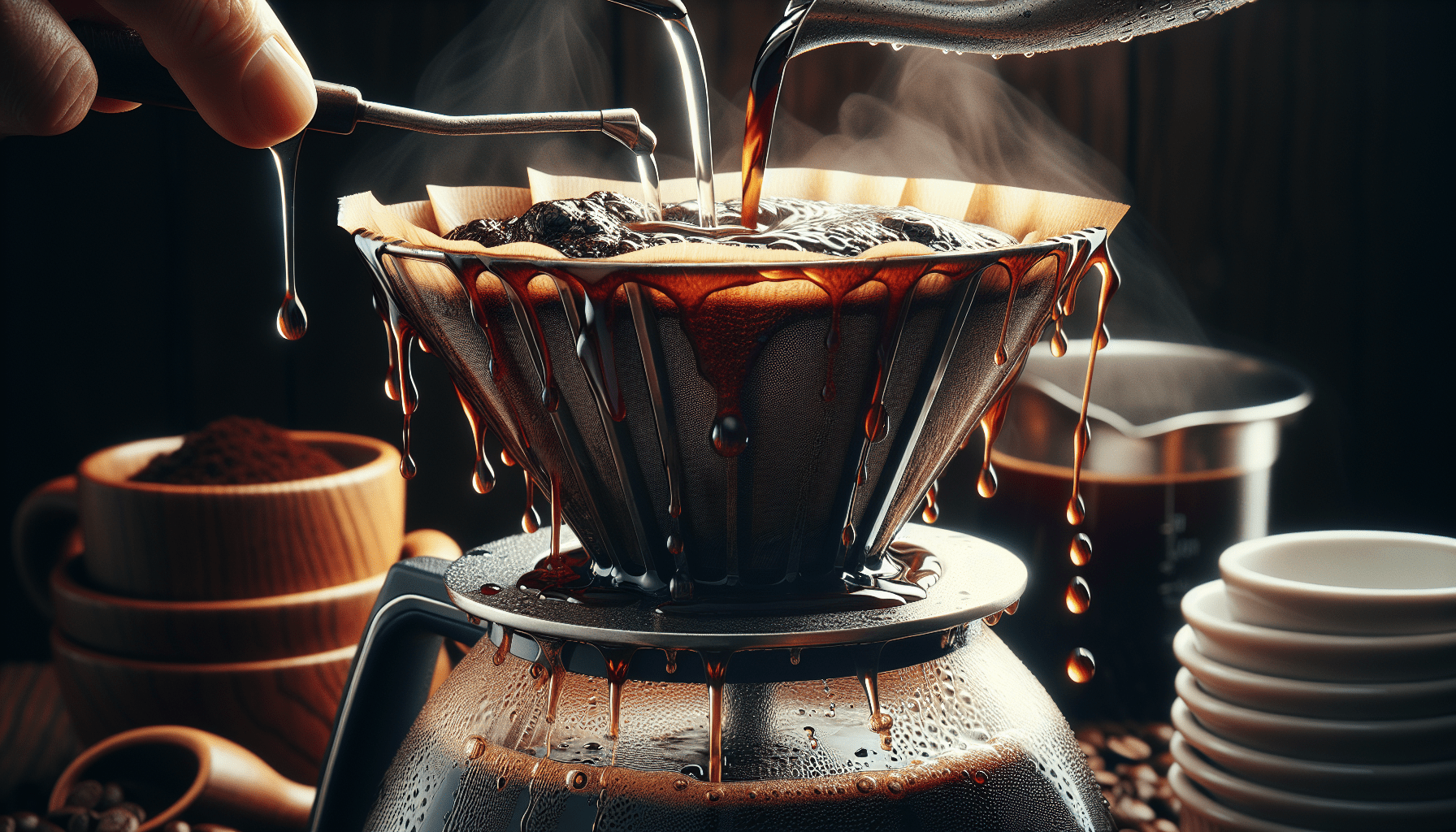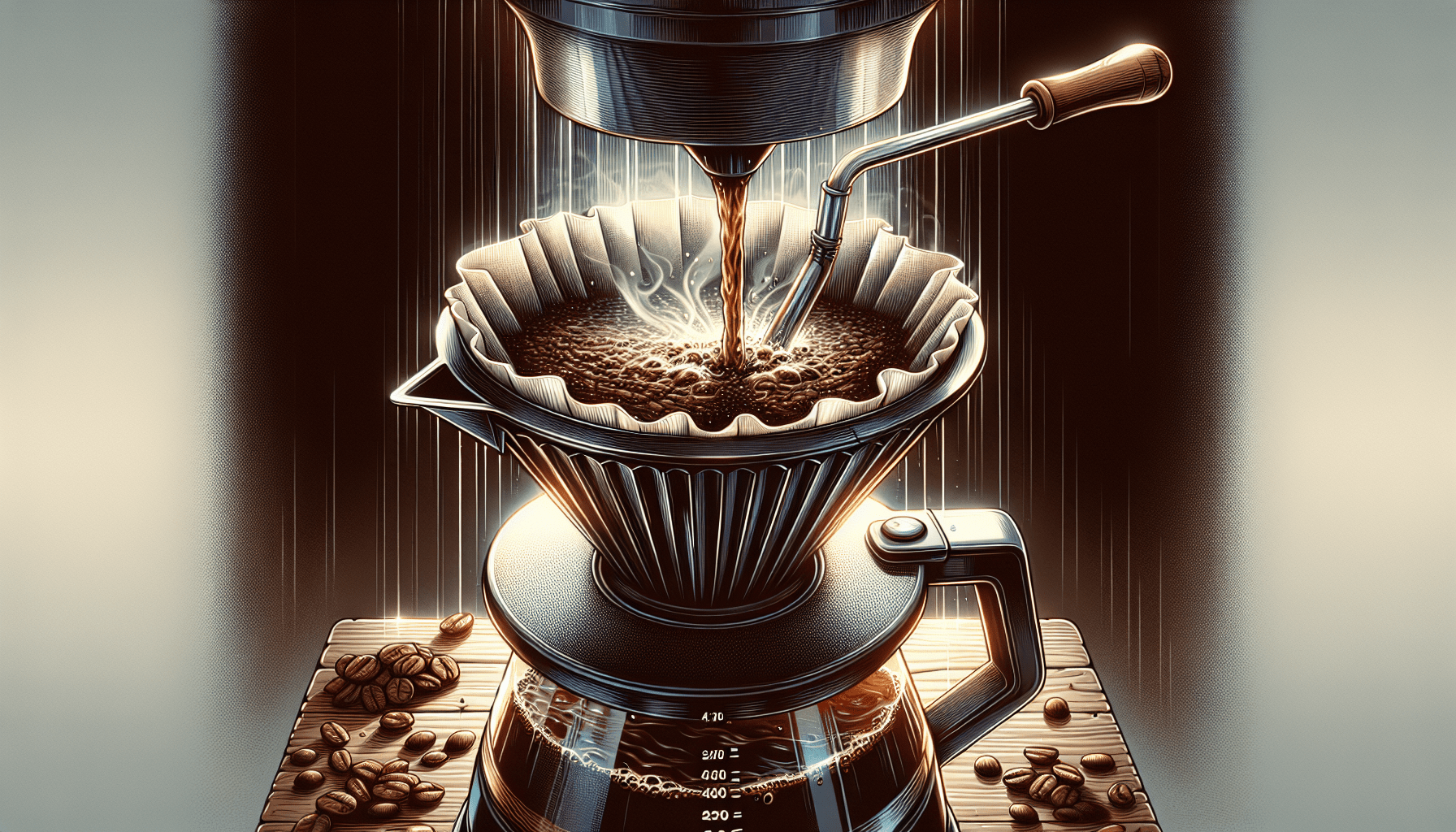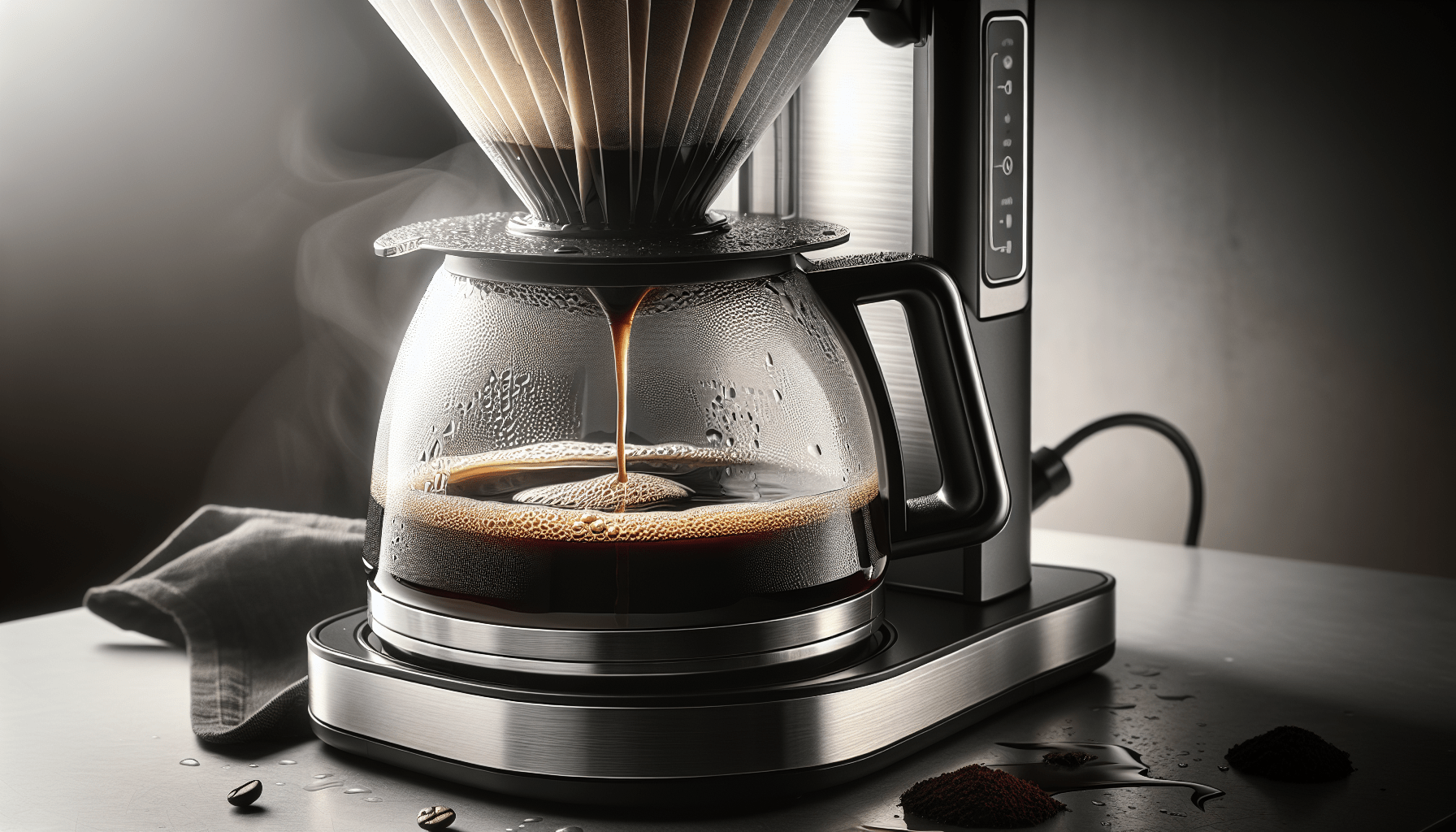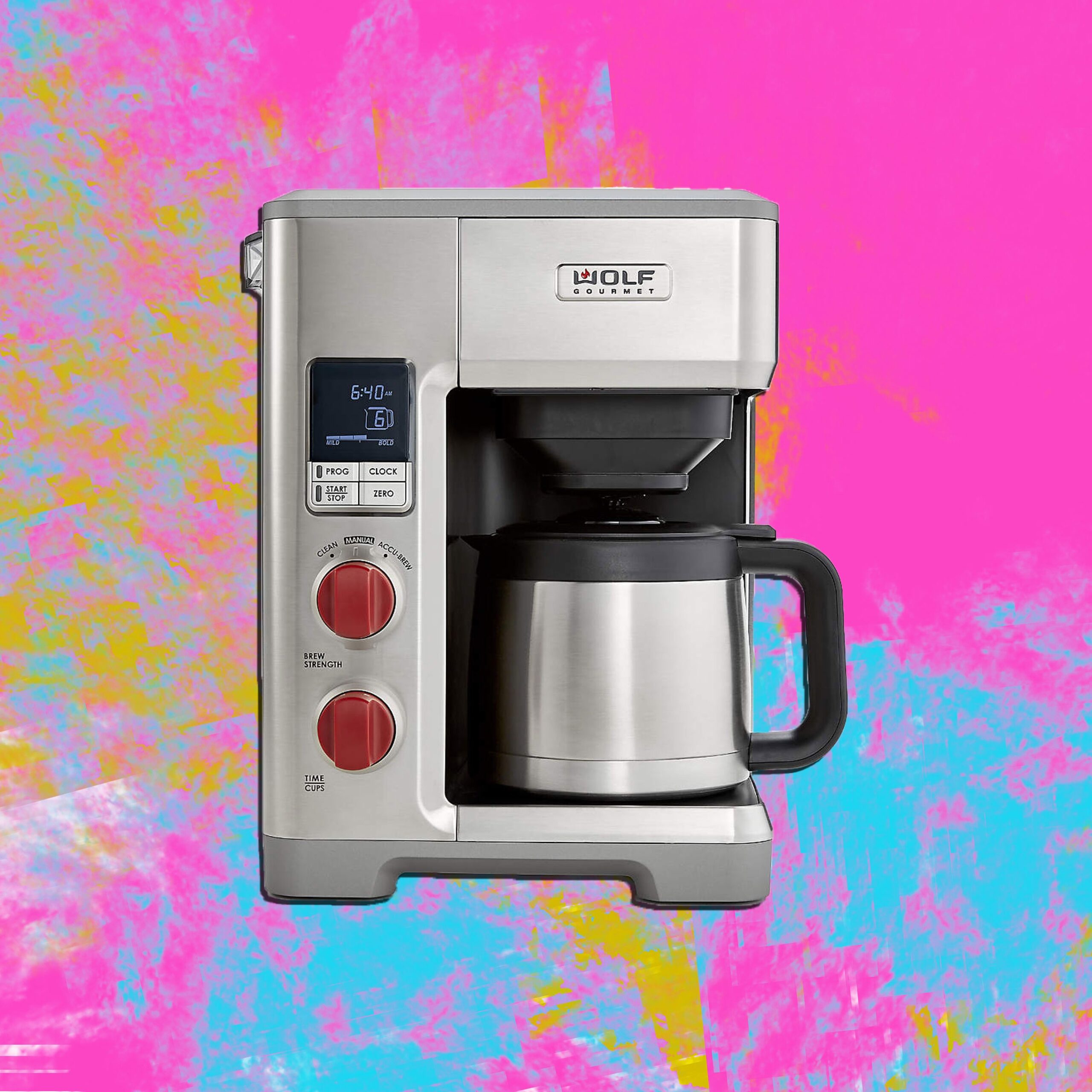Whether you’re a coffee connoisseur or just a casual caffeine lover, you may have wondered if you can make espresso with a drip coffee maker. Well, the answer is not as straightforward as you might think. While a drip coffee maker may not be specifically designed to brew espresso, there are certain techniques and hacks you can employ to achieve a close approximation. In this article, we’ll explore the possibilities of using a drip coffee maker to make a satisfying cup of espresso, delving into the pros and cons and providing you with the insights you need to elevate your coffee game. So, grab your cup of joe and let’s dive into the wonderful world of espresso-making!
What is Espresso?
Definition of Espresso
Espresso is a concentrated and flavorful form of coffee that is brewed using high pressure and a finely ground coffee bean. It is known for its rich and robust taste, as well as its distinctive crema, which is a layer of foam on top of the espresso shot. This strong and invigorating beverage is the base for various coffee-based drinks such as cappuccinos, lattes, and mochas.
How is Espresso Different from Regular Coffee?
Espresso is significantly different from regular coffee in terms of its preparation method and flavor profile. While regular coffee is brewed by allowing hot water to slowly pass through a filter filled with coarsely ground coffee beans, espresso is made by forcing highly pressurized hot water through finely ground coffee beans. This process extracts the full spectrum of flavors and oils from the coffee beans, resulting in a more concentrated and intense taste. Moreover, espresso has a thicker consistency and a higher caffeine content compared to regular coffee.
How Does a Drip Coffee Maker Work?
Drip Coffee Maker Basics
A drip coffee maker is one of the most popular and commonly used appliances for brewing regular coffee. It functions by heating water and then dripping it over a filter basket filled with medium to coarsely ground coffee beans. As the water passes through the coffee grounds, it extracts their flavors and oils, resulting in a brewed pot of coffee that collects in a carafe.
Components and Functionality
Drip coffee makers consist of several key components that work together to brew coffee. These include a water reservoir, a heating element, a showerhead, a filter basket, and a carafe. The water reservoir holds the water that is heated by the heating element, and the showerhead distributes the hot water evenly over the coffee grounds in the filter basket. As the water drips through the grounds, it is filtered and collected in the carafe, ready to be served.
Can a Drip Coffee Maker Make Espresso?
Limitations of Drip Coffee Makers
While drip coffee makers excel at brewing regular coffee, they are not designed to make espresso. The extraction process of espresso requires high pressure, which is not achievable with a standard drip coffee maker. Additionally, drip coffee makers typically do not reach the necessary water temperature for extracting the full flavors and oils from finely ground coffee beans.
Pressure Requirement for Making Espresso
Espresso brewing requires a pressure range of 9 to 10 bars, which is the unit of measurement for pressure in coffee-making. This high pressure is vital to properly extract the intense flavors and aromas from the coffee beans. Drip coffee makers, on the other hand, usually operate at a pressure of around 1 to 1.5 bars, which is significantly lower than what is required for espresso. Therefore, a drip coffee maker cannot produce true espresso.
Understanding Espresso Machines
Espresso Machine Basics
Espresso machines are specifically designed to meet the requirements for making espresso. They utilize a pump-driven system, which generates the necessary high pressure, typically 9 bars, to extract the rich flavors from the finely ground coffee beans. In addition to pressure, espresso machines also control water temperature and brew time to ensure optimal extraction.
Pump-driven Espresso Machines
Pump-driven espresso machines are the most common type of espresso machines available for home use. They use an electric pump to create the required pressure for brewing espresso. This type of machine allows for precise control over pressure and extraction, resulting in a consistently high-quality espresso. Pump-driven espresso machines also often have additional features such as steam wands for frothing milk and adjustable settings for customization.
The Importance of Pressure in Espresso Making
How Pressure Affects Espresso Extraction
The high pressure used in espresso extraction plays a crucial role in achieving the desired flavor and quality. When hot water under pressure comes into contact with the finely ground coffee, it pushes through the coffee puck, extracting the soluble compounds that contribute to the aroma, body, and taste of the espresso. The pressure promotes emulsification of oils and helps create the signature crema on top of the espresso shot.
Why Drip Coffee Makers Lack Sufficient Pressure
Drip coffee makers lack the necessary pressure for espresso extraction due to their design and functionality. The low pressure produced by drip coffee makers does not provide enough force to adequately extract the flavors and oils from the tightly packed coffee grounds. As a result, the resulting coffee is less concentrated and lacks the characteristic intensity of a true espresso.
Alternative Methods for Making Espresso
Moka Pot
A Moka pot is a stovetop brewing device that allows you to brew a coffee similar in strength and richness to espresso. It consists of a bottom chamber for the water, a middle chamber for the coffee grounds, and a top chamber for the brewed coffee. As the water in the bottom chamber heats up, it builds pressure, pushing the hot water through the coffee grounds and into the top chamber. While not a true espresso, a Moka pot can produce a strong and flavorful coffee that resembles espresso.
AeroPress
The AeroPress is a versatile and portable coffee maker that can produce a concentrated coffee similar to espresso. It operates by combining air pressure and immersion brewing. Inverted brewing is often used with the AeroPress, where the coffee and water steep together before being pressed through a filter. This method allows for a faster extraction and a more espresso-like result compared to traditional drip coffee makers.
Manual Espresso Machines
Manual espresso machines, also known as lever espresso machines, rely on manual force to generate the necessary pressure for brewing espresso. These machines feature a lever that the user must pull down to force the hot water through the coffee grounds. While they require more effort and skill to operate, manual espresso machines can deliver a high-quality espresso shot with the desired pressure and flavor profile.
Can You Achieve a Similar Result with a Drip Coffee Maker?
Drip Brewing vs. Espresso Extraction
While drip brewing and espresso extraction share some similarities in terms of water and coffee interaction, they are fundamentally different processes. Drip brewing relies on gravity and time to extract flavors gradually, resulting in a milder and less concentrated coffee. Espresso extraction, on the other hand, utilizes pressure to quickly extract a highly concentrated coffee with a rich and full-bodied flavor.
Factors That Influence Flavor and Intensity
There are several factors that influence the flavor and intensity of coffee brewed with a drip coffee maker, but they may not entirely replicate the characteristics of espresso. The grind size, coffee-to-water ratio, and brewing time all contribute to the final taste. By adjusting these factors, you can experiment with drip coffee makers to achieve a stronger and more concentrated cup of coffee, but it may not achieve the full-bodied and intense flavor profile of a true espresso.
Is It Worth Trying?
Experimenting with Drip Coffee Maker
If you are a coffee enthusiast who loves to explore different brewing methods and flavors, it is worth experimenting with your drip coffee maker to see if you can achieve a more espresso-like result. By modifying variables such as grind size, coffee dosage, and brewing time, you may be able to enhance the strength and richness of your coffee. While it may not be a true espresso, it can still be a delightful alternative.
Expectations and Potential Disappointments
It’s important to set realistic expectations when attempting to make espresso-like coffee with a drip coffee maker. While you can certainly enhance the intensity and flavor, it will not be an exact replica of espresso. The lack of pressure and specific espresso brewing parameters will inevitably result in a different taste profile. Embrace the uniqueness of your drip coffee maker and enjoy the flavors it can offer rather than comparing it directly to espresso.
Tips for Improving Drip Coffee Maker Espresso
Choosing the Right Coffee Beans
To achieve a stronger and more flavorful coffee with your drip coffee maker, selecting the right coffee beans is essential. Opt for dark roast beans or espresso blends that are specifically designed to deliver a robust and intense flavor profile. These beans often undergo a longer roasting process, which enhances their richness and allows them to withstand higher extraction levels.
Grind Size and Consistency
Grind size directly affects the extraction process and the resulting flavor. For a more espresso-like extraction, opt for a finer grind size rather than the coarser grind typically used for drip coffee. Aim for a consistency similar to table salt. This finer grind will increase the surface area of the coffee particles, promoting a higher extraction and enhancing the concentration of flavors in your cup.
Water Temperature
Water temperature is another crucial factor that impacts flavor extraction. For a more intense and coffee-forward experience, increase the water temperature slightly above the usual range for drip brewing. Aim for a temperature between 195 to 205°F (90 to 96°C), as this higher temperature can help extract more of the desirable coffee compounds, resulting in a stronger cup.
Brewing Time and Ratio
Experimenting with brewing time and coffee-to-water ratio can also help you achieve a more espresso-like outcome. Increase the coffee dosage slightly, as a higher coffee-to-water ratio will result in a more concentrated extraction. Additionally, consider extending the brewing time by a few seconds, allowing for increased contact between water and coffee, which can lead to a bolder and more intense flavor.
Final Verdict
Drip Coffee Makers vs. Espresso Machines
While drip coffee makers are not capable of producing true espresso, they still offer a convenient and reliable way to brew delicious regular coffee. Espresso machines, on the other hand, provide the necessary pressure and control to extract the full flavors and oils from finely ground coffee beans, resulting in a unique and intense coffee experience. Both have their merits and can cater to different preferences and brewing needs.
Exploring Different Coffee Brewing Techniques
Ultimately, the world of coffee is vast and exciting, with a multitude of brewing techniques and flavors to explore. While your drip coffee maker may not be able to replicate espresso perfectly, it can still be a versatile tool for brewing regular coffee and experimenting with different flavor profiles. Embrace the versatility of your drip coffee maker while also considering other brewing methods to expand your coffee knowledge and enjoy a diverse range of coffee experiences.




